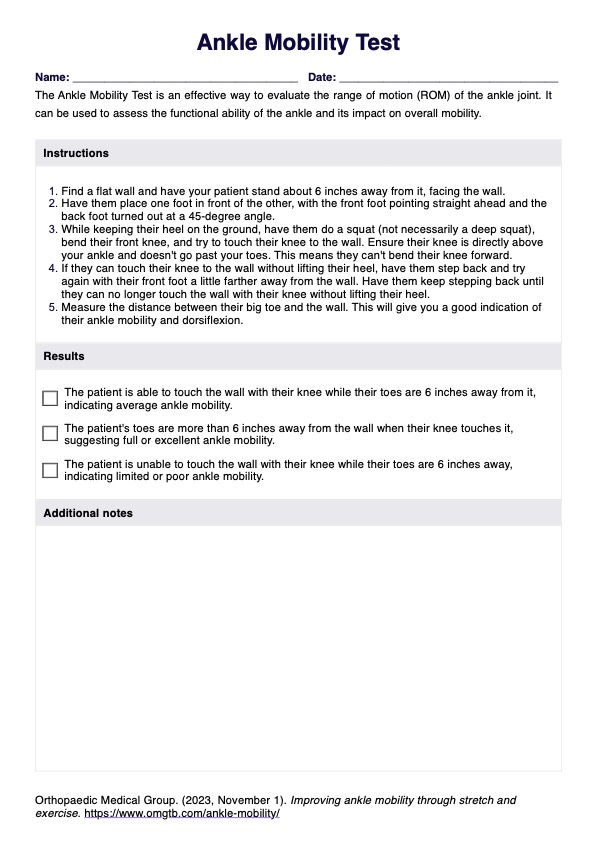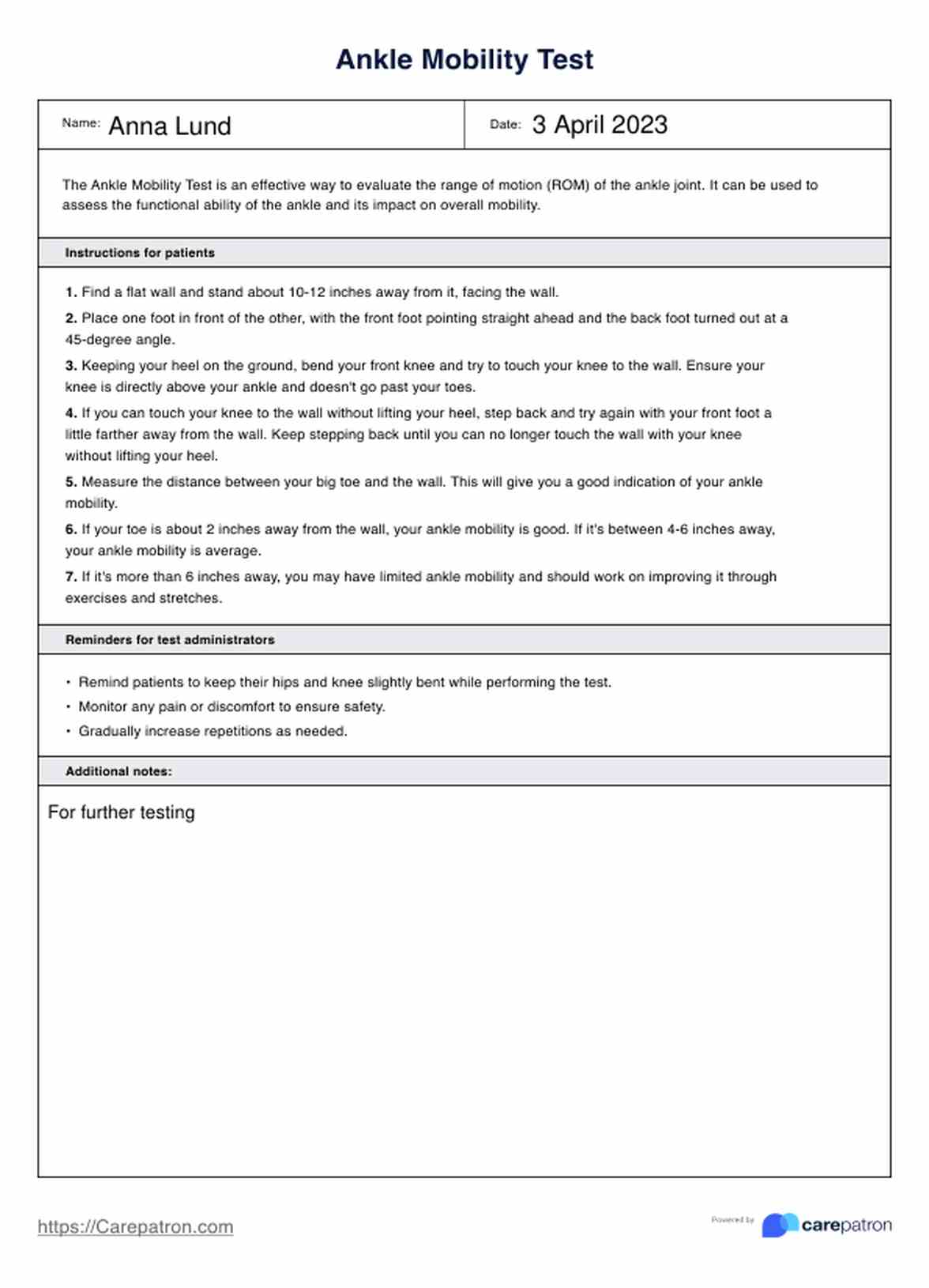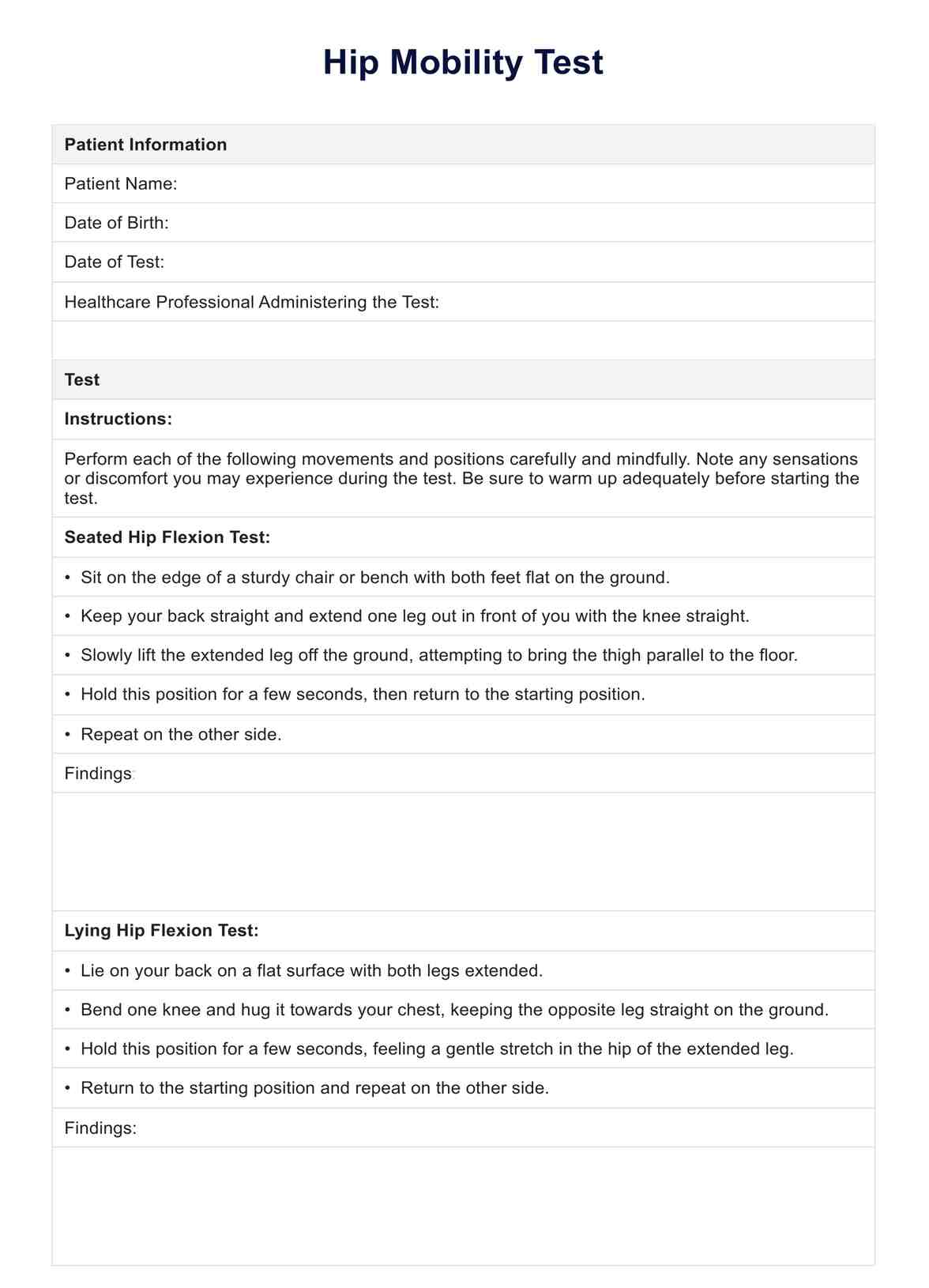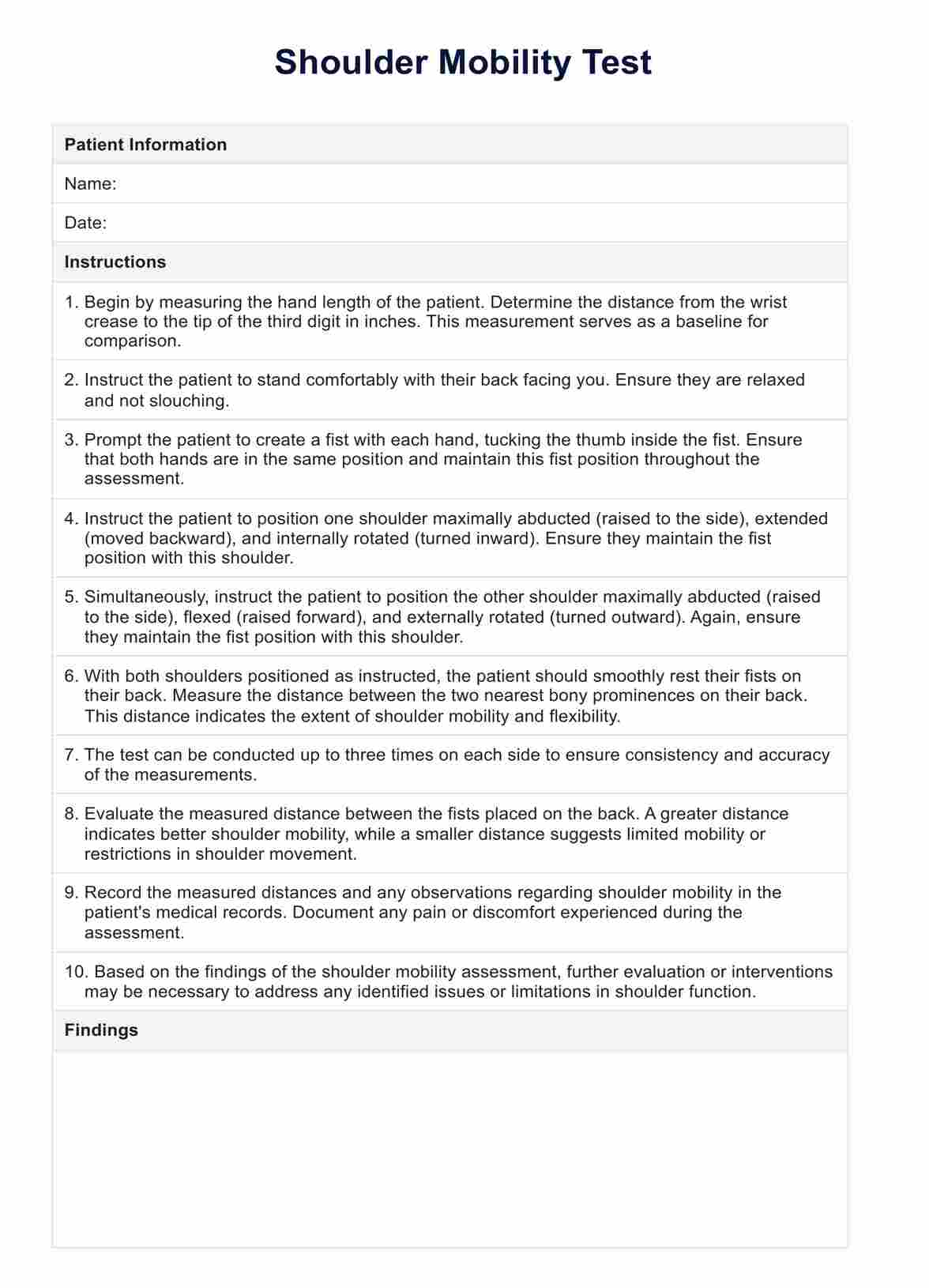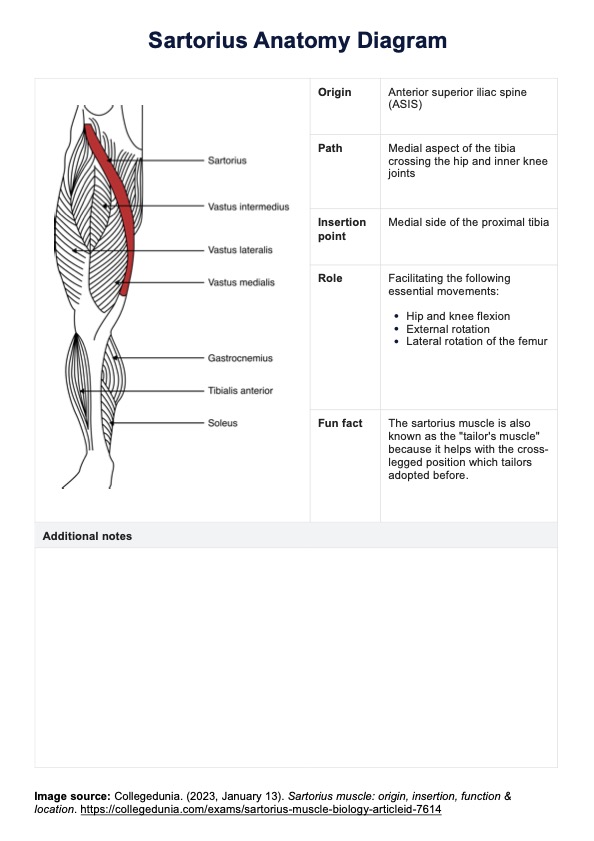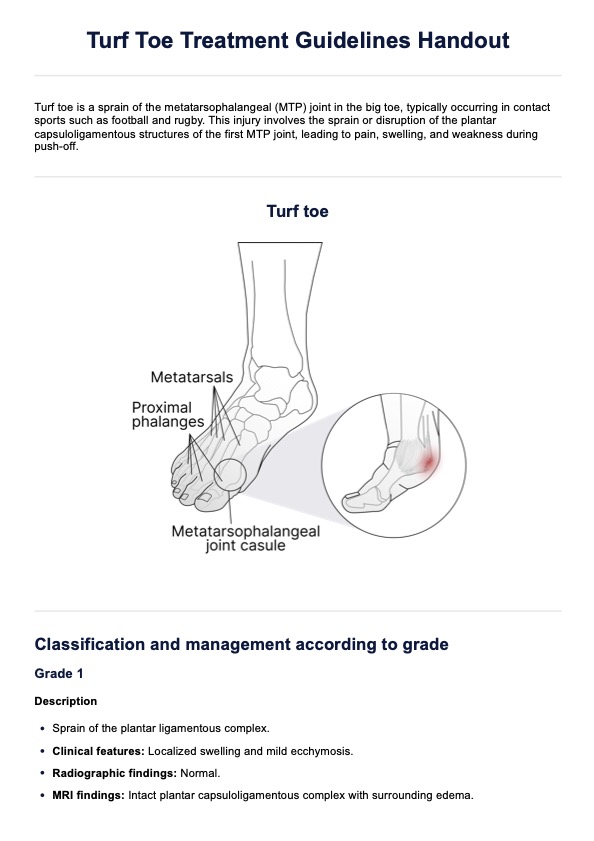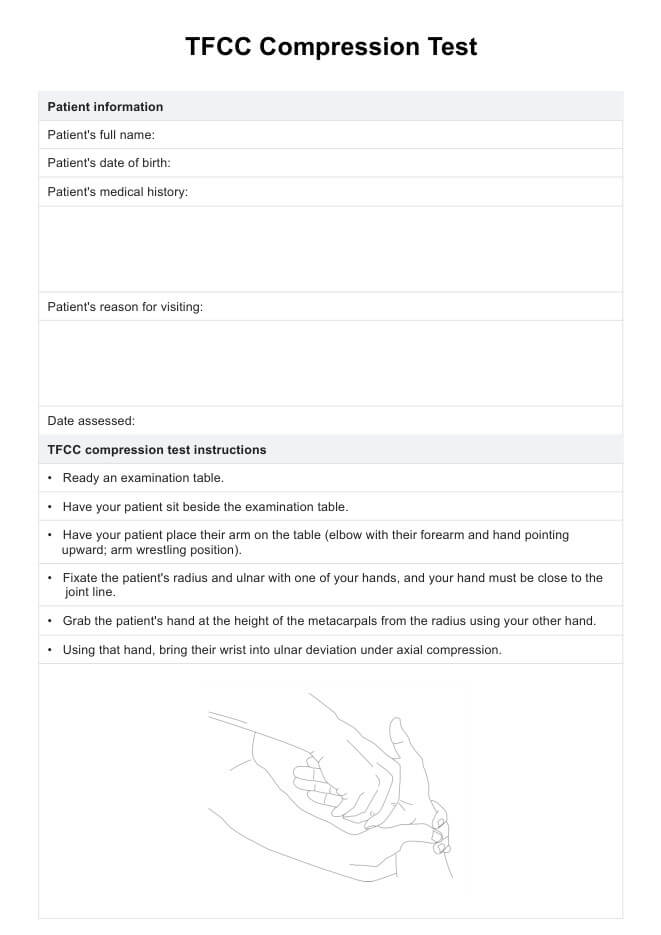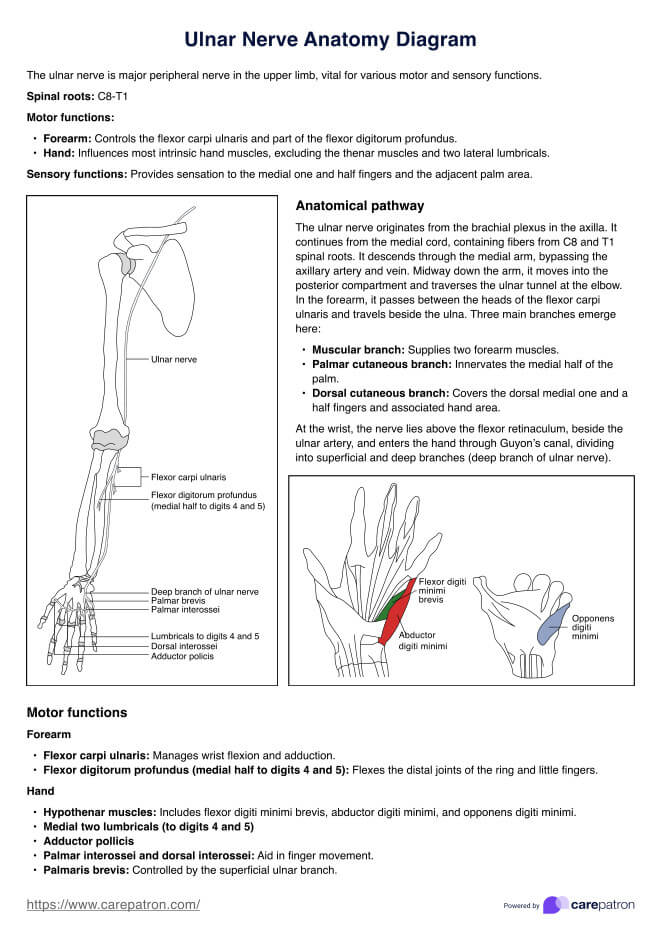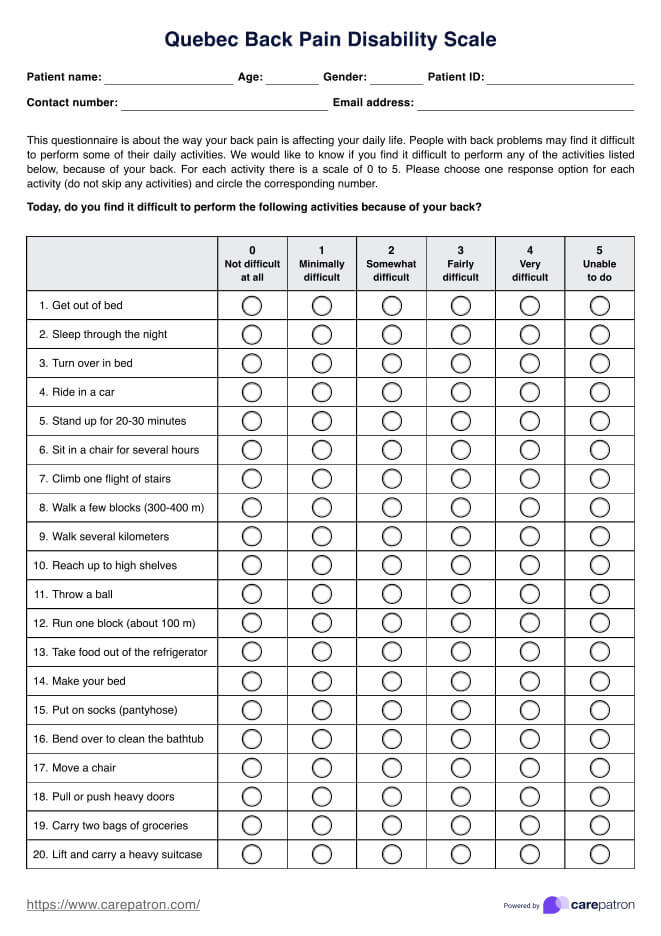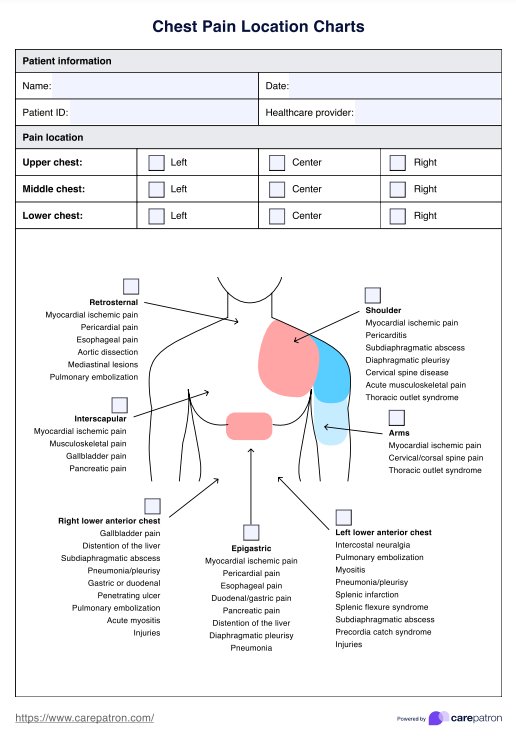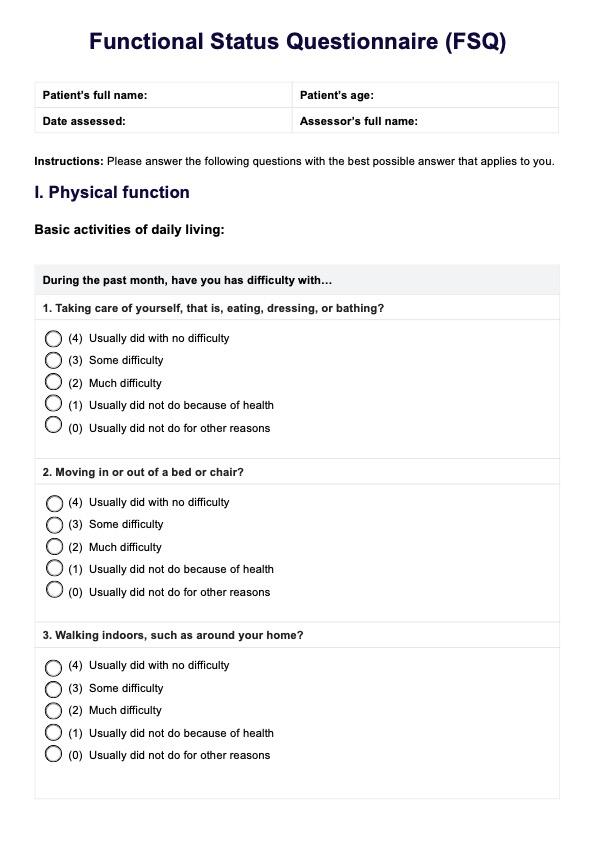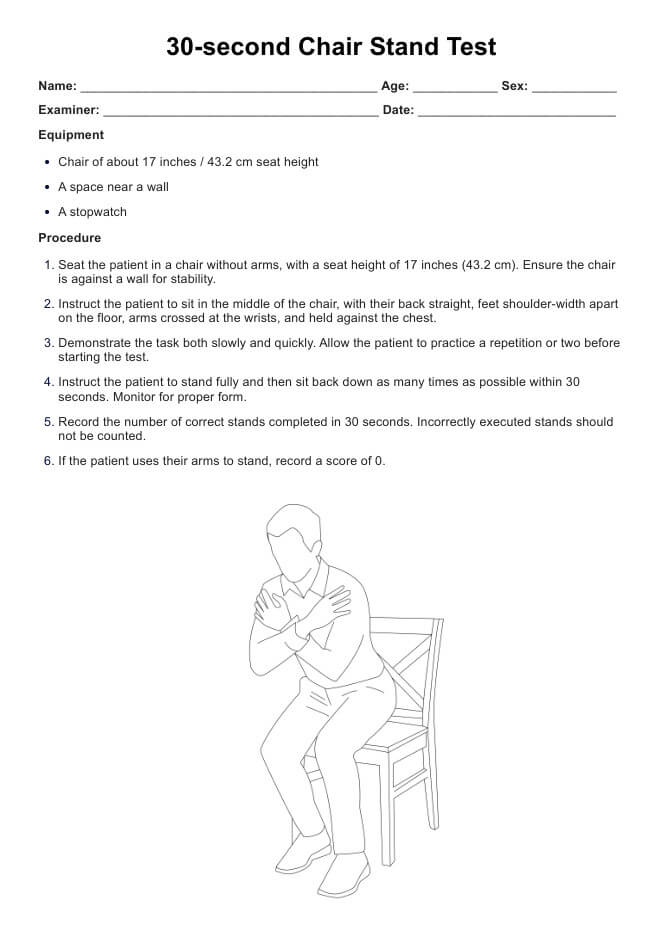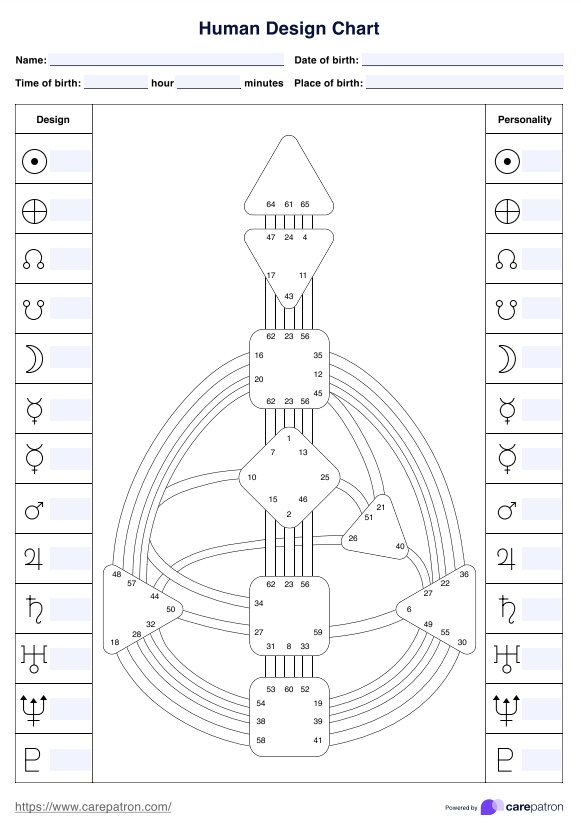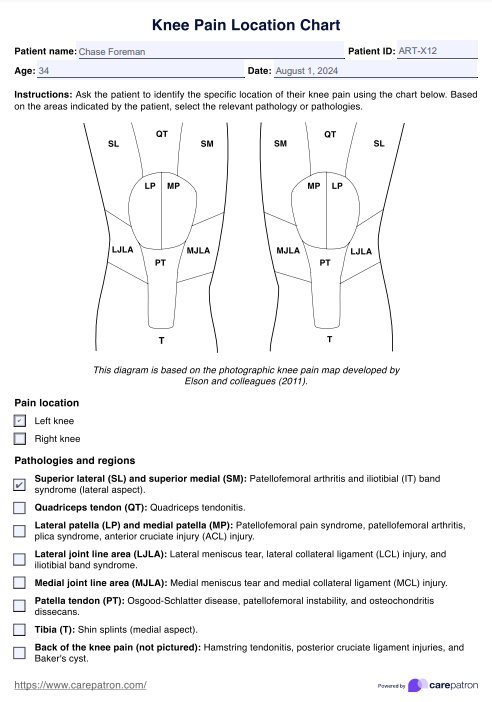Ankle Mobility Test
Assess your patient's ankle condition using the Ankle Mobility Test. Get access to a free PDF template and example to learn more.


What is an Ankle Mobility Test?
The ankle is a critical joint of the body, providing mobility and stability to the lower extremity. Various issues may arise without proper ankle functioning, such as difficulty walking or severe pain.
The assesses the ankle joint's range of motion and flexibility. It is a quick, easy test that can help provide valuable information about how well the ankle functions. It can also provide insight into whether further assessment or treatment is needed.
Patients are instructed to stand with one foot in front of the other, with the front foot pointed straight ahead and the back foot turned at a 45-degree angle to perform the test. Keeping their heel on the ground, they should try to bend their front knee and touch it to the wall.
The test administrator, usually a physical therapist, ensures the patient's knee is directly above their ankle and not going past their toes. If they can touch the wall without lifting their heel, the patient steps back and try again with the front foot a little farther away from the wall. The distance between the patient's big toe and the wall is then measured and recorded.
The Ankle Mobility Test is similar to the Knee To Wall Test. Both assessments involve the patient bending their knee and attempting to touch the wall. Clinicians can also use the Lower Extremity Functional Scale to assess the ankle’s function and condition.
Ankle Mobility Test Template
Ankle Mobility Test Example
How does this Ankle Mobility Test work?
This free Ankle Mobility Text provides a comprehensive guide on performing the assessment. Follow these steps to get started with the template:
Step One: Download the test
Access the Ankle Mobility Test using the link provided on this page. You can also get a copy from the Carepatron app or our handy resources library.
Step Two: Provide the patient with a copy
Hand a copy to your patient. You can give them a printout or a digital copy of the assessment. Explain the test's purpose and answer any questions they may have.
Step Three: The patient performs the test
Using the steps laid out in the Ankle Mobility Test form, ask your patient to do the assessment. Guide them throughout the process and take note of the distance between their big toe and the wall.
Step Four: Assess and analyze
Evaluate your patient’s results and analyze any discrepancies. This will help you decide if further assessment or treatment is necessary.
When to use a Test Ankle Mobility?
You can use the Ankle Mobility Test to assess and monitor ankle mobility in various conditions. Medical professionals often use this tool to:
Determine the range of motion and flexibility of the ankle joint
The Ankle Mobility Test can help you evaluate your patient's ability to move their ankle. This assessment can be used to start a treatment plan, track progress over time, or identify any restrictions that may require further intervention.
Assess joint function in patients
Patients with arthritis, tendonitis, or bursitis often benefit from this test. It can help you identify any abnormalities in the joint function that may need to be addressed.
Monitor post-operative rehabilitation
After surgery, you can use this assessment to measure and monitor your patient's progress. The assessment can help you determine if their joint mobility improves during recovery.
Assess the effects of an ankle sprain or fracture on mobility
If your patient has suffered an ankle injury, the Ankle Mobility Test can help you observe their progress and determine how much mobility they have regained.
Who is this printable Ankle Mobility Test PDF for?
This free Ankle Mobility Test PDF worksheet is suitable for heaps of medical professionals, including:
- Physical therapists
- Occupational therapists
- Chiropractors
- Nurses
- Physicians
- General practitioners
- Sport coaches
- Personal trainers
- Athletic trainers
- Weight-loss counselors
- Nutritionists
It can also be used in various medical settings like hospitals, rehabilitation centers, and private clinics.
.png)
Benefits of testing Ankle Mobility
The free Ankle Mobility Test provides numerous benefits for clinicians and patients. Some of the key advantages include the following:
Time-saving
The test is quick and easy to perform, allowing you to assess a patient's ankle function in minutes. This means you can save time and resources while providing an objective assessment.
Consistent
This test can help you accurately and consistently measure ankle mobility. You can track your patient's progress over time and measure improvements.
Entirely digital
The Ankle Mobility Test is available in both paper and digital formats, making it easy to access from anywhere.
Comprehensive
This assessment tool provides a thorough step-by-step guide on how to perform the Ankle Mobility Test. It also includes an example assessment that you can reference if needed.
Versatile
You can use this free test on various settings and for various conditions. Plus, the test suits most age groups – from children to adults.
Commonly asked questions
The Ankle Mobility Test is designed to assess and monitor ankle mobility in various conditions. Medical professionals often use this tool to determine the ankle joint's range of motion and flexibility.
The Ankle Mobility Test doesn't have a scoring system. Instead, it compares the patient's current range of motion and flexibility to their pre-injury state.
The Ankle Mobility Test measures patients' ability to move their ankle joints in different directions. It can also help identify any restrictions that may require further intervention.


